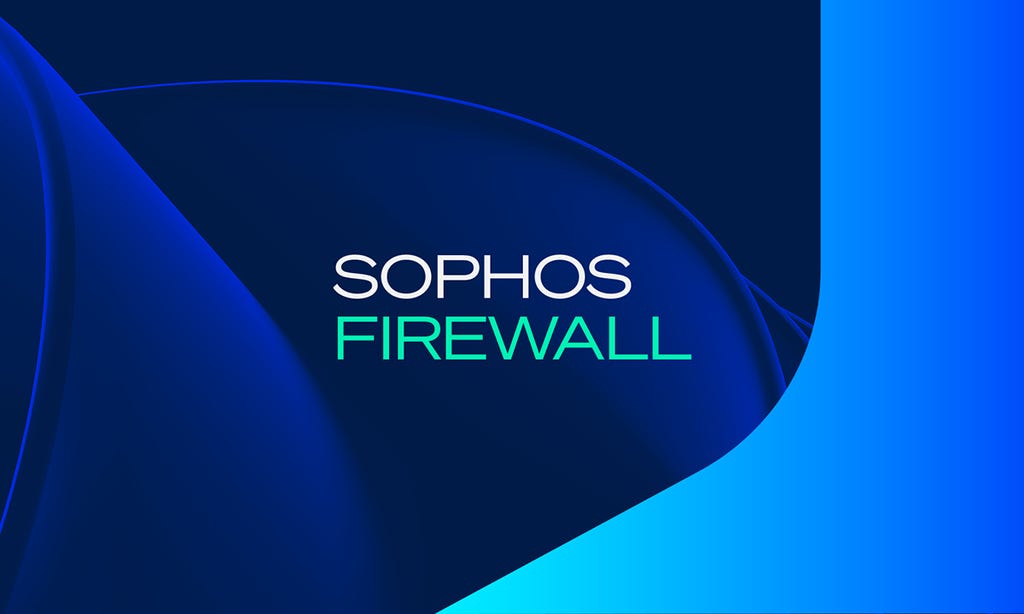
Qu’est-ce qu’un centre d’opérations de sécurité (SOC) ?
Un centre des opérations de sécurité (SOC) surveille, détecte, réagit et remédie aux cybermenaces. Il se compose d’une équipe de professionnels de la cybersécurité qui supervisent les applications, bases de données, appareils, réseaux, serveurs, et les sites web. Cette équipe veille à ce que les problèmes de sécurité soient identifiés et résolus 24 h/24, 7 j/7 et 365 j/an.
Comment fonctionne un SOC ?
Un SOC est géré par une équipe de sécurité. L’équipe peut être de n’importe quelle taille. Son rôle consiste à mobiliser les personnes, les processus et les technologies nécessaires pour contrôler et sécuriser les systèmes informatiques d’une entreprise.
Les équipes SOC apportent leur soutien dans les domaines suivants :
1. Détection des menaces
Les membres de l’équipe SOC utilisent des technologies de chasse aux menaces pour rechercher et traiter les cybermenaces.
2. Investigation d’événement de sécurité
Une fois qu’une équipe SOC a identifié une cyberattaque potentielle, elle effectue une investigation. À ce stade, les membres de l’équipe SOC vérifient si une menace est présente. Dans l’affirmative, ils évaluent la gravité et le contexte de la menace et déterminent les mesures à prendre pour y remédier.
3. Réponse aux incidents
À partir des conclusions de l’investigation, les membres de l’équipe SOC résolvent l’incident de sécurité. Pour ce faire, ces derniers peuvent isoler les postes, arrêter les processus dangereux qui compromettent les systèmes informatiques d’une entreprise et/ou déployer des sauvegardes.
Rôles et responsabilités de l’équipe SOC
Analyste de la sécurité
L’analyste de la sécurité est généralement le premier membre de l’équipe SOC à intervenir en cas de cyberattaque. L’analyste vérifie que les processus et procédures SOC sont correctement mis en œuvre et tient les parties prenantes au courant de la réponse aux incidents et des initiatives mises en place par l’équipe SOC pour résoudre la situation.
Ingénieur sécurité
Les ingénieurs en sécurité SOC travaillent avec les développeurs pour s’assurer que la cybersécurité est irréprochable au sein des systèmes informatiques d’une entreprise, pour contrôler la position de l’entreprise en matière de sécurité et pour répondre aux cyberattaques.
Responsable SOC
Le responsable SOC fournit aux membres de l’équipe SOC une formation sur les compétences en cybersécurité. En outre, il crée des processus et des procédures SOC, évalue les rapports d’incident, élabore et exécute des plans de communication de crise, rédige des rapports de conformité et effectue des audits de sécurité.
Responsable de la sécurité des systèmes d’information (RSSI)
Le responsable de la sécurité des systèmes d’information a le dernier mot sur les politiques et stratégies de cybersécurité d’une entreprise et travaille avec d’autres membres de l’équipe SOC pour résoudre les problèmes de sécurité.
Pourquoi avez-vous besoin d’un SOC ?
1. Réponse aux incidents
Votre équipe SOC recherche les signes d’une cyberattaque, investigue les activités malveillantes et neutralise les attaques.
2. Visibilité de la sécurité
Votre SOC surveille votre infrastructure informatique et résout les incidents de sécurité en temps quasi réel.
3. Gestion des risques
Les membres de votre SOC suivent les cybermenaces, en parlent aux parties prenantes de l’entreprise et collaborent avec elles en conséquence. Ils produisent également des rapports de sécurité et peuvent vous aider à élaborer et à exécuter une stratégie de gestion des risques.
Quelle est la meilleure solution ? Un SOC ou un centre d’opérations réseau (NOC) ?
Un SOC et un NOC revêtent tous deux une importance capitale dans la manière dont une entreprise gère sa position en matière de cybersécurité.
Un SOC se concentre sur la sécurité, tandis qu’un NOC suit les performances du réseau d’une entreprise. Le NOC protège également contre les pannes et interruptions du réseau qui pourraient perturber le fonctionnement d’une entreprise,et gêner ses employés ou ses clients.
Les équipes SOC et NOC peuvent travailler ensemble pour résoudre les incidents. Par exemple, considérez ce qui se passe si votre entreprise subit une panne de réseau. Votre NOC peut restaurer votre réseau et s’assurer qu’il fonctionne conformément à vos accords de niveau de service (SLA). Par ailleurs, si une cyberattaque provoque l’arrêt de votre réseau, l’équipe SOC peut travailler avec l’équipe NOC pour déterminer la cause du problème puis résoudre ensemble le problème et remettre votre réseau en service.
Quels sont les défis auxquels se heurtent les SOC ?
1. Dotation en personnel
Les équipes SOC manquent souvent de personnel ou manquent de compétences et de formation adéquates. Ces problèmes empêchent les équipes SOC de suivre le rythme des alertes et incidents de sécurité. Ils empêchent également les SOC de fonctionner à des niveaux de pointe.
2. Surproduction d’alertes
Les SOC peuvent utiliser des dizaines d’outils de cybersécurité, mais ces outils ne permettent pas toujours aux membres de l’équipe SOC de distinguer les alertes critiques des alertes non critiques. Les membres de l’équipe SOC doivent parfois gérer des dizaines d’alertes de sécurité à la fois. Dans l’un ou l’autre de ces scénarios, les membres de l’équipe SOC risquent de manquer des alertes de sécurité critiques.
3. Frais généraux
Un SOC nécessite que des professionnels de la cybersécurité soient à disposition pour identifier et résoudre les problèmes de sécurité 24 h/24 et maintenir des outils de sécurité à jour en place. Cependant, répondre à ces deux exigences peut s’avérer coûteux.
Quelles sont les meilleures pratiques en matière de SOC ?
Effectuez une évaluation des risques
Évaluez les risques sur l’ensemble de votre infrastructure informatique pour bien comprendre les dangers auxquels votre entreprise est confrontée puis réaliser les investissements qui s’imposent.
Collectez et agrégez les données de sécurité
Déployer des outils de collecte et d’agrégation des données de sécurité. Ces outils vous permettent de collecter des données de sécurité provenant de plusieurs sources, de générer des informations à partir de celles-ci et d’utiliser ces informations pour trouver des moyens d’améliorer votre sécurité.
Priorisez et triez les alertes de sécurité
Établissez des processus de priorisation des alertes afin que les membres de votre équipe SOC n’aient aucune difficulté à déterminer quelles alertes de sécurité nécessitent une attention immédiate.
Compilez des stratégies pour vos équipes
Rédigez des manuels de stratégie pour indiquer aux membres de votre équipe SOC les étapes à suivre afin qu’ils puissent réagir rapidement aux ransomwares, à l’ingénierie sociale et à d’autres types de cyberattaques.
Automatisez vos activités de sécurité
Automatisez la collecte et l’analyse des données de sécurité et d’autres tâches du centre d’opérations de sécurité pour rendre votre SOC plus rapide et plus efficace que jamais.
N’interrompez jamais la chasse aux cybermenaces
Donnez à votre équipe SOC les outils dont elle a besoin pour rechercher et répondre de manière proactive aux cybermenaces 24 h/24, 7 j/7 et 365 j/an.
Suivez les performances de votre SOC et créez des rapports à ce sujet
Créez des indicateurs de performance clés (KPI) pour suivre les performances de votre SOC. Utilisez ces indicateurs clés de performance pour produire des rapports de performances afin de chercher en permanence à améliorer votre SOC.
Les outils indispensables à votre SOC
1. Découverte des actifs
Un outil de découverte des actifs montre à votre équipe SecOps quels systèmes informatiques sont utilisés et quels processus y sont exécutés. Certains outils de découverte des actifs peuvent également détecter automatiquement de nouveaux actifs.
2. Évaluation des vulnérabilités
Les outils d’évaluation des vulnérabilités détectent les problèmes de sécurité au sein de votre infrastructure informatique et alertent votre équipe SOC chaque fois que ces problèmes sont découverts. Ils vous indiquent également si vos opérations informatiques fonctionnent conformément aux normes PCI DSS, SOX et autres exigences de sécurité des données.
3. Surveillance des comportements
Un outil de surveillance du comportement permet d’établir une base de référence pour les comportements du système informatique et de surveiller les violations des stratégies de sécurité, les pics d’activité du réseau sortant et d’autres anomalies.
4. Détection d’intrusion
Un outil de détection d’intrusion arrête les cybercriminels à leur point d’entrée. Il fonctionne en appliquant des règles de corrélation créées à partir de vos renseignements sur les menaces et vous informe des menaces actuelles et émergentes.
5. Gestion des événements et des informations de sécurité (SIEM)
Un outil SIEM recherche des modèles dans les événements de sécurité, capture les données de journal et produit des informations sur la sécurité.
Dotez-vous d’un SOC as-a-service entièrement managé
Sophos MDR (Managed Detection and Response) fournit un centre d’opérations de sécurité as-a-service (SOCS) entièrement managé. Il vous fournit tous les outils et ressources SOC dont vous avez besoin dans un service tout-en-un.
Avec Sophos MDR, vous pouvez :
- Détectez et répondez automatiquement aux cybermenaces sur l’ensemble de votre infrastructure informatique
- Obtenez l’aide des chasseurs de menaces, des ingénieurs et de hackers éthiques de Sophos en matière d’investigation et de résolution des cybermenaces
- Associez vos renseignements sur les menaces à des indicateurs de compromission pour rechercher et vous protéger contre les cyberattaques
Pour en savoir plus sur Sophos MDR ou pour commencer à l’utiliser, contactez-nous dès aujourd’hui.
Contactez-nous dès aujourd’hui
Sujet connexe : Qu’est-ce que la gestion des événements et des informations de sécurité (SIEM) ?
.svg?width=185&quality=80&format=auto&cache=true&immutable=true&cache-control=max-age%3D31536000)


.svg?width=13&quality=80&format=auto&cache=true&immutable=true&cache-control=max-age%3D31536000)



